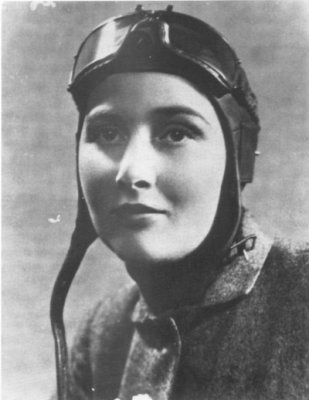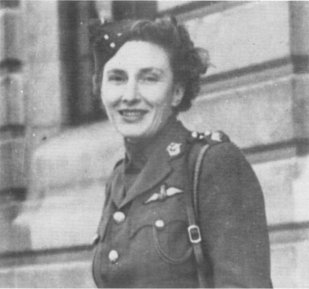

 The South African
The South African
by REV. C. SCOTT SHAW
Editors’ Note: The author, the Rev Charles Scott Shaw, now Minister of the Adelaide Presbyterian Church, formerly served for many years as a chaplain in the South African Defence Force and saw service with No 2 Squadron, SAAF (The Flying Cheetahs) in the Korean War, 1951-1952
The two decades following World War I were the golden age of expanding air routes. The solo flight of Colonel Charles Lindbergh across the Atlantic Ocean set in motion a succession of distance and record flights which were splashed in banner headlines across the front pages of contemporary newspapers. Among the pioneers of aviation were many women such as Amelia Earlart, Amy Mollison (nee Johnson) and Jean Batten; but it was during the hectic years of World War II that the first woman was to fly a jet plane. From the information at my disposal it would seem that she was Captain Rosamund King Everard-Steenkamp, an unsung and comparatively unknown heroine. In August 1945 she flew a Meteor, the type which later regained the world speed record for Great Britain.
Born at Bonnefoi in the Carolina District, Transvaal, in 1907, Rosamund Everard was the second daughter of C.J. Everard and his artist wile, Bertha King. Her father was a progressive trader and farmer in the area. She was educated at Eunice Girls’ High School, Bloemfontein, in England and Paris where she studied the violin under Thibaud. As an idealist, in search of truth and beauty, her music lifted her up to sing among the clouds and inspired her with a passion for flying. As she wrote in her diary, ‘I sometimes felt I was walking on the clouds.’
She took up flying with her brother Sebastian, when they returned to the farm with its panoramic views of the limitless, rolling Transvaal veld where great billowing thunderheads came rolling over the green, green grass and the rainwashed sky was intensely blue. She divided her time between farming, flying and painting with her mother, aunt and sister.
In 1935 she and her brother had their own Puss Moth aircraft and by 1937 she was flying regularly and toured Europe in a Hornet Moth. She flew over Mount Pilatus after only 100 hours flying time to her credit. After qualifying for a commercial ‘B’ licence she took part in the Empire Air Display at Hendon, London, where she met Tommy Rose and Jean Batten. A solo tour of Europe and North Africa culminated in an official reception in Ankara where she was the guest of Kemal Ataturk.

After gaining her Navigator’s and Instructor's licences, she was commissioned to fly all aircraft to Kenya for delivery to Brigadier Lewin (later head of the Red Cross). Her flight was solo via Tripoli, Cairo, Wadi Halfa and Atbara to Nairobi where her brother met her. They took part in the air Display at Njoro and then flew home via the East Coast in their own plane. By 1939 she had obtained the South African ‘B’ Licence and Instructor’s III and IV. When World War II broke out she was official Instructor at the Witwatersrand Technical College and trained many pupil pilots who later distinguished themselves in the South African Air Force.
Rosamund was commissioned with the rank of captain and posted to 61 Squadron where she was engaged in instruction in addition to a variety of flying duties. By 1942 she and a fellow woman pilot, Rhenia Slabbert (Mrs Blake), were flying Lodestars on shuttle service between South Africa and Cairo. At the end of the year she suffered a great personal bereavement in the death of her husband, Captain H.N.F. Steenkamp, SAAF, whom she had taught to fly. This loss made her all the more determnitled to realize her ambition to form an all-women flying ambulance unit to operate in the war theatre. Her efforts in this direction met with official disapproval.
Hearing that the Russians employed women pilots, she decided to join the Russian Air Force. Getting a lift from the USAAF, she proceeded to Teheran, the wartime communication centre between the Russians and the Allies.
At the Russian military headquarters she met nothing but suspicion and distrust. Air Commodore Runciman and the British Ambassador, Sir Reader Bullard, with whom she lunched advised her that, even if the Russians did accept her, they would not give her the work she wanted to do but would callously try to break her spirit. Thus, all her dreams and schemes to achieve a more effective role for women pilots in the war were once again frustrated.
In 1944 she joined the Air Transport Auxiliary, ferrying many types of aircraft to the operational bases. The ATA girls used only their handbooks and were given the most meagre instruction before flying a new type of plane coming off the production lines. By this time Rosamund had well over 3 500 hours flying on active service and had flown almost every type of aircraft produced.
Towards the end of the war the first jet planes were in the experimental stages. Wing Commander H. Bird-Wilson asked Rosamund to fly the Meteor III to show that ‘even a woman could do it’. She accepted the challenge and, although she had the throttle only partly open, cruised at 600 km per hour. Her log book records the flight with the succinct remark ‘Wizard!’.

After the war was over and she was due to return to South Africa, she was delivering a Spitfire XIV from Hamble to Ercall when, for no apparent reason, she dived, levelled out at about 10 metres and crashed at high speed. She was killed instantly. As with her American counterpart, Amelia Earhart, there was no accounting for the tragedy.
It is significant that she met her end as a Spitfire pilot and thus emulated some of the immortals of the Battle of Britain in her own, ‘finest hour’. Of Rosamund Everard-Steenkamp, talented musician, artist, agriculturist and flyer, it may be said, ‘Whom the gods love, die young.
Note: Rosamund Everard-Steenkamp was a talented painter of landscapes of the Eastern Transvaal. Her work was represented at the Empire Exhibition and in the Historical Exhibition of South African Art at the Pretoria Centenary. She was also a qualified judge of sheep and cattle.
Return to Journal Index OR Society's Home page
South African Military History Society / scribe@samilitaryhistory.org